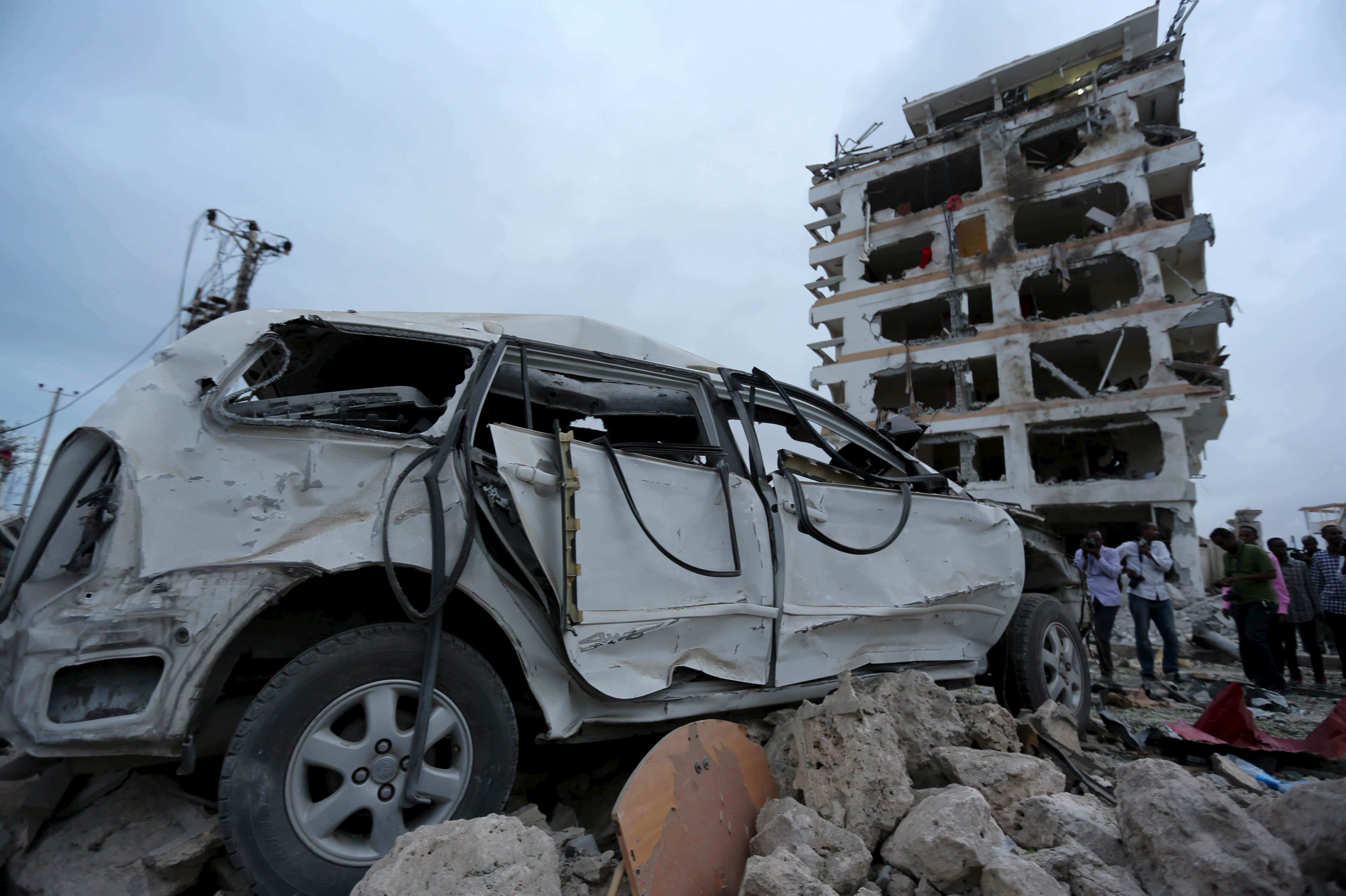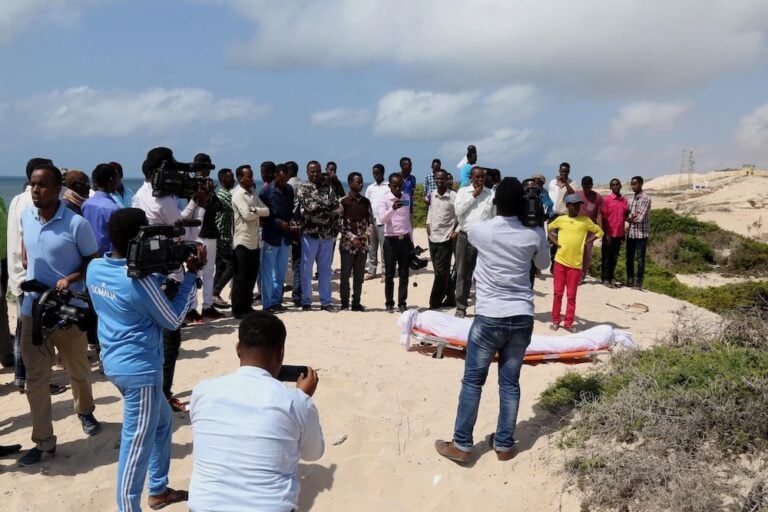NUSOJ has unveiled a roundup of the state of press freedom in Somalia in 2015, painting a picture of another year dominated by violent hostilities against journalists and an oppressive climate that undermines the basic rights of independent media.
This statement was originally published by NUSOJ on 1 January 2016.
The National Union of Somali Journalists (NUSOJ) has unveiled a roundup of the state of press freedom in Somalia in 2015, painting a picture of another year dominated by violent hostilities against journalists and an oppressive climate that undermines the basic freedoms and rights of independent media.
The killing of journalists remained the main feature – with six journalists targeted in gun attacks or in suicide-bombings – directly and by vehicle-borne improvised explosive devices (VBIED). Once again, most died in Mogadishu and only one outside, in Baidoa. The Al-Shabaab terrorist group has been responsible for these murderous attacks.
A unique story in these killings has been the fate of orphaned children. In Baidoa, both journalist Daud Ali Omar and his wife lost their lives, leaving behind young children. When Hindiyo Haji Mohamed died, her children lost both parents as her husband, another journalist, was killed earlier in 2012.
Another salient feature has been the unrelenting apprehensions of journalists. 25 journalists were arrested in Mogadishu, Dhusamareb, Bossasso, Garowe and Berbera. Courts used provisions in the Somali penal code to keep journalists in jail on the basis of trumped-up and politicised charges. Some were detained without charges for periods beyond the maximum 48 hours, before being released or charged before court. The federal government – as well as authorities in Puntland and Somaliland, and the Ahlusunah Waljama armed group – have all been responsibly for arresting and jailing journalists.
Six radio stations were attacked and closed down because authorities wanted to silence them. Authorities usually punish media houses by closing them as a signal to others that they will suffer the same fate if they don’t tone down their criticism of their authority.
The final feature of 2015 has been the latest attempt by the federal parliament to shackle media through the promulgation of the controversial media law.
Although some clauses initially endorsed by the Council of Ministers were removed during the debates in parliament, many remaining still constitute a serious threat to press freedom – empowering courts to compel journalists to reveal confidential sources, forcing newspapers to register and be licenced, eroding the independence of the Somali Media Committee, raising the bar for journalist to enter the profession by needing a university degree in journalism and be registered at the Ministry of Information before being recognised as a journalist. Worse still, the law will give the Ministry of Information power to police journalism by setting a professional code of ethics for journalists.
“Throughout the past 12 months, Somali media have come under relentless assaults from many sides – locked up by authorities, [the] murder of journalists by non-state actors and terrorists, self-censorship and now [a] crude attempt at control by political forces,” said Omar Faruk Osman, NUSOJ Secretary General.
Recalling the momentous events in Somalia in 2012, the deadliest year for Somali journalists ever, in the wake of elections and change of government, NUSOJ Secretary General Omar Faruk Osman added: “We urge the authorities to discharge their duty to protect journalists’ safety, refrain from retaliatory acts against journalists because of their work and, given than 2016 is election year, ensure that they are left to do their jobs in safety. A true unfettered journalism is an essential element of a free democracy”.
NUSOJ will be publishing a full and detailed report on Somalia’s State of Press Freedom in 2015 soon.



